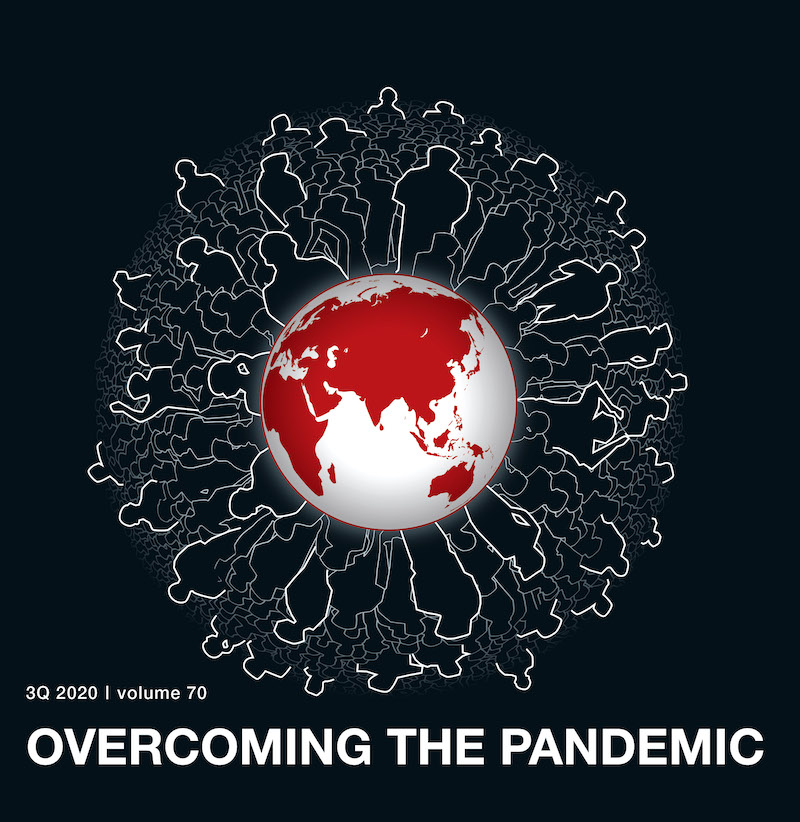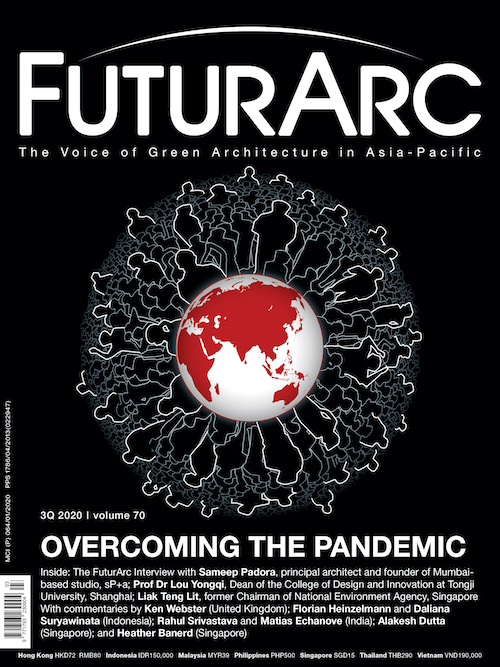Architecture as a force for good
September 30, 2020
25 September 2020 — I thank the Singapore Institute of Architects for continuing with Archifest this year, and adapting it to a digital setting. Technology has made it possible for us to continue meeting and networking virtually. Your efforts to stay in close touch with your community and support one another is very encouraging.
The field of architecture is often associated with glamour and grandeur — from sparkling skyscrapers to awe-inspiring buildings and special monuments. Fundamentally, however, architecture is about creatively shaping the built environment to positively impact our everyday lives. It is particularly apt that Archifest’s theme this year is how architecture can be a force for good. Let me share some brief thoughts on two “areas of good” that architecture can tackle — climate change and contagious diseases.
Climate change and architecture
Climate change has presented the world with new challenges and risks, leading to serious threats to lives and livelihoods. More extreme weather such as floods, droughts and wildfires, have resulted in various countries having to address food shortages, destruction of property, the spread of disease. In Singapore, especially, we face the threat of rising sea levels. The Government recognises these threats, and has put in place plans to adapt our built environment. For example, flood protection for critical infrastructure, and longer-term plans to protect vulnerable coastal areas.
However, tackling climate change requires a whole-of-nation effort. The architectural fraternity, and the built environment sector, including its academia and researchers, play a crucial role. Keeping a close watch on climate science, and changes to our environment. And developing or acquiring cutting-edge engineering and design solutions to bolster our climate resilience. Implementing these plans will require complex engineering solutions. Designs will have to account for uncertainty in climate science and projections, while balancing this with other principles, such as cost effectiveness and liveability. It will not be an easy problem to solve, and the stakes are high. But our architects and professionals are creative and resourceful, and I believe that our industry will be able to adapt and meet the evolving needs of our city.
Contagious diseases and architecture
Let me turn now to the second existential threat, contagious diseases. COVID-19 has shown us that we cannot take the number and quality of our public spaces for granted. Such spaces are the beating heart of urban social life, in our housing estates and workplaces. It may not always remain so. Globally, designers and architects have been re-examining what constitutes a quality living environment, including various traditional design factors such as ventilation, green areas, natural light and others.
Urban planners and architects have also been looking at adapting building configurations and design principles to manage contagious diseases. For instance, more flexible designs for public spaces to cater to social distancing measures, while also fostering spontaneous and planned community interactions. Buildings would need to be designed to be more pandemic resilient. For example, reducing high-touch surfaces and increasing ventilation. And, should working from home become a norm, we may need to revisit key assumptions behind town planning, and the configuration of office buildings and apartments.
COVID-19 isn’t the first contagious disease we have seen, and it certainly won’t be our last. Our daily routines and workflows have been dramatically altered, but it is still to be seen how permanent these changes will be. Nevertheless, we must capitalise on the lessons that we have already learned from this crisis, and continually enhance our understanding and practice of design.
Architecture as a collaborative project
I have shared about two threats that are especially pronounced for a city like Singapore. Improving our climate resilience, and managing the threat of contagious disease well, are essential for our island nation with a high urban density.
The government cannot tackle these threats alone. All stakeholders in the built environment sector, public and private, must come together. This is the spirit of Singapore Together, where we build partnerships together, and help one another to go further than we can alone. Archifest’s theme this year encapsulates that motivation. As a force for good, architecture is not an isolated field, but one that is hugely relevant to all our lives. I hope that Archifest 2020 will spur an open exchange of ideas, and more partnerships formed, in Singapore and beyond.
Above is the opening speech by Desmond Lee, Minister for National Development, for the virtual opening forum of the Singapore Archifest 2020.
Notwithstanding how buildings have been designed in the past, our use of them has changed. Will spaces revert to their intended use once the pandemic recedes? Cities change, we know this. The pandemic has revealed, however, that they are not designed for rapid change.
Find out more about what the pandemic has taught us about the nature of change in the architecture, design, circular economy, population/density, landscape and governance. All in the FuturArc Q3 2020 issue: Overcoming the Pandemic.
To read the complete article, get your hardcopy at our online shop/newsstands/major bookstores; subscribe to FuturArc or download the FuturArc App to read the issues.
Previously Published Commentary, Online Exclusive Feature
Contact us at https://www.futurarc.com/contact-us for older commentaries.



